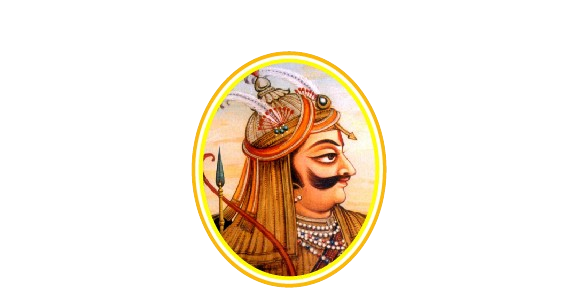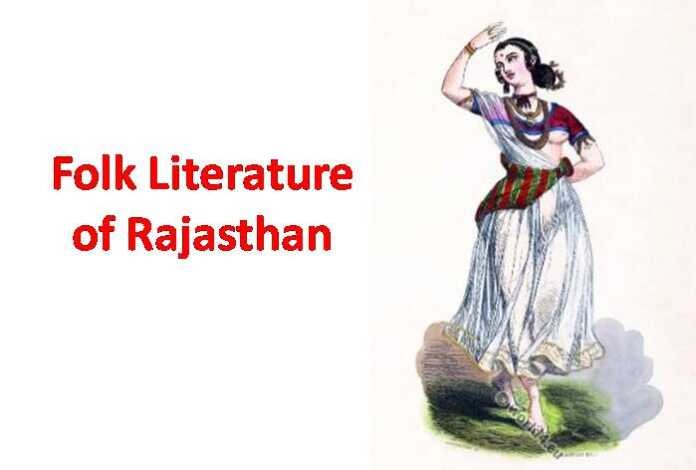The folk literature of Rajasthan not only represents the Rajasthani culture and traditions, but it also provides reliable references to the history of that time.
The political, social and cultural narratives can conveniently be drawn on the accounts or facts preserved in the Inscriptions, histories and state papers. Coins and paintings also throw flood of light on various events of history.[1]
In the case of Rajasthan, things are different. It was deprived of these sources due to invasions occurring from 8th to the 18th century in an organized manner by the alians. It is needless on my part to recount all the invasions of the Arabs, the Turks, the Mughals and the Marathas that were directed towards it.
The destruction of Records was almost complete which may be ascribed to devastating climate and the ravages of various pests. This plightful situation rendered the land deprived of authentic sources.
However, by this we never mean that no document, painting or manuscript were left for the preparation of hisrory of Rajasthan. What we mean to convey is that the surviving material was not sufficient in bulk to justify its claim for supplying information for a detailed narrative.
However, in the absence of regular and legitimate historical material, there are other indigenous sources which, if handled skilfully, would yield mine of information for the history – social, cultural and political.[2]
The foremost of this category consists of the Folk Literature of Rajasthan – created time and again in continuity by the bards, poets and singers – whom we may correctly term as the primitive historians of mankind. Before regular histories were written or before the poets sore high to imagine, the bards, who roamed from place to place or who visited one door after another recorded thrilling events and glorified personages of real worth and value.
They chose the themes of battles and persons of warlike habits. Both bards and the poets spoke in dignified terms about Bapa, Prithviraj, Hamirdev, Rana Kumbha, Sanga, Pratap, Chandra Sen, Jaswant Singh, Jai Singh and many more.
They led us, through their narratives, to the valley of Haldighati, to the battles of Khanwa and Datani. They took us to the siege of Chitor, Ranthambhor, Kumbhalgarh; and narrated tales which inspire and instruct. The themes of love in the form of composition in Baramasas and Duvavats enchant those who hear them.
The works of the native bards in the form of Vanshavalis, Khyats, Vats etc. afford many valuable data, in facts, incidents, behaviors, religions etc. One of the contemporary bards, as for example of the Duvavat,[3] refers the de to a Council of war which decided that Udai Singh should retire to the defiles of Cirwa and the charge of the defense of the fort of Chittor be given to Jaimal Mertia.
It was so decided that Udai Singh would defend the new capital of Udaipur against the impending danger of Akbar’s invasion. Thoughmodern writers[4] denounce this act of Udai Singh, but our bard rightly make us think that his act was in the best interest of the country.
Similarly Pabuji-ra-duha,[5] Pabuji-ra Pavada,[6] Gogapedi,[7] the valuable folk literature preserve miracles performed by the Chivalrous heroes in the persons of Gogaji, Pabuji, Tejaji and the like.
Their heroic actions of saving the lives of cows and fighting against the alians raised their status to godship. This literature throws sufficient light to understand the age in which they lived.
The most important and significant thing that has been recorded in this literature is that the pastoral and agricultural classes along with other low classes had a proud satisfaction that there was some super-natural world and a world of powers, spirits and miracles which shape their destiny. Through this kind of literature they could understand the value of kindness, righteousness, sincerity, justice and respect for law.[8]
If we leave aside the controversy of the age of Chand we find, through the pages of his monumental work entitled Prithviraj Raso, that there occurs many geographical as well historical details which are of immense use for understanding the life and politics of India of the 12th century A.D.
The most significant aspect of the bardic literature is that it records truth, sometimes most unpalatable to the patrons of the chroniclers. Uda the son of Khubha has been denounced by all the khyat writers as the patricide.[9]
Similarly, the Khyat writers of Jodhpur have not tried to cover the fact that Rao Ganga was murdered by his son Maldeo.[10] Jaswant Singh’s clever stratagem at the battle of Khajwah has been brought to light by the Khyat writers.[11] They had been fearless in these cases to open their mind boldly.
Of course, the material drawback regarding the bardic literature is that the writers frequently use allegory, mythological details and improbable circumstances which shake the confidence of the readers.
The numerical strength of the armies under the leaders sometimes goes to lakhs for hundreds. As for example, the Rawal-Ranaji-ri-vat[12] mentions that Rana Pratap marshalled one lac man to fight against the imperialists at the famous battle of Haldighati.
But the sober history makes us believe that he had not more than 8 thousand followers to stand by his side. Again the Vanshavalis abound in names and barren of events.
They are related so much without circumstances and causes, that the most profound and eloquent writer must despair or rendering them either instructive or entertaining to the reader. Barring these shortcomings the folk literature of various categories contain many facts that serve as beacons to direct the research of the students of history and literature.
REFERENCES
[1] Dr. G.N. Sharma, Folk Literature of Rajasthan as a Source of our Historical Studies, Proceedings of Rajasthan History Congress, pp.55-57.
[2] Dr. G.N. Sharma, Folk Literature of Rajasthan as a Source of our Historical Studies, Proceedings of Rajasthan History Congress, pp.55-57.
[3] M.S. Duvavat, FF. 4-8.
[4] Tod, p. 372: Havell, p. 467; Smith, p. 85; Ojha, I, p. 422; S.R. Sharma, Pratap p. 12.
[5] Pabuji-ra duha by Meha, Granth No. 5, Basta No. 22, Jd. B.A.
[6] Ibid., Basta No. 23 Jd. B.A.
[7] Gogapedi by Asha, Granth No. 3, Basta No. 9, Jd. B.A.
[8] G.N. Sharma, Social Life in Mediaeval Rajasthan, pp. 227-228
[9] G.N. Sharma, Mewar and tha Mughal Emperors, p. 11
[10] Marwar-ki-Khyat, FF. 14, 24, etc.
[11] Jaswant-Singhji-ro-Yash, F. 29.
[12] Rawal-Ranaji-ri-vat, Folio 107.




